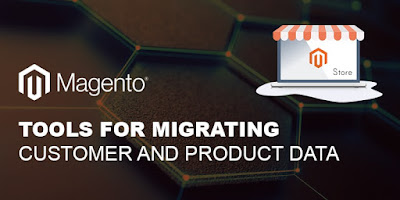2015 was an amazing year for Magento fans since it was the time when the newest version of the Magento platform was released. Moreover, the cherry on the cake was all those improvements that Magento 2 brought with it as compared with its predecessor. Magento 2 is faster, better optimized, and packed with features. The previous issues of responsiveness, flexibility in Magento 1 have been meticulously worked upon in Magento 2.
The result was a high- performing, versatile, customizable and open-source development platform that has changed the way magento development services in india are looking at their craft. Well, now that the new version is out, it is essential for ecommerce brands to gradually migrate to it so that they can enjoy all the benefits that Magento 2 has to offer.
Why Should You Migrate to Magento 2?
Magento has continued to provide its support to Magento 1.0 despite the release of Magento 2.0. However, this support will stop in 2018. This means that all the critical updates and releases will not be applicable on Magento 1.
Therefore, if you haven’t already started planning on moving ahead with migration, maybe now is the time to start. This is mainly because once Magento withdraws support for Magento 1.0, then you would be left far behind in the game of omnichannel ecommerce.
Not only that, there is an attractive list of benefits that will compel you to take the jump-
- Core performance is improved
- Shorter load times and faster processing of data
- Streamlined backend for enhanced user experience for admin panel
- A fully responsive and touch-friendly UX design
- Few requirements for third-party or custom extensions
- New options such as Self-hosting and Platform-as-a-service available
- Easier to customize making Magento 2 less expensive
Now that you’ve understood the various advantages of migrating to Magento 2, it is important to keep a few things in mind before going through the process.
Key Considerations Before Migrating to Magento 2
Develop A Concise Migration Plan
Although Magento 2 has a myriad of benefits, it holds a certain share of complexity as well. This complexity could be a hindrance in the migration process. Therefore, it is essential that you develop a migration plan to help you follow through. This plan will include the details from concept to completion. It will act as a guide and checklist.
Eliminate Redundant Functionality
In addition to this, coding and upgrading extensions cost tons of money and take time. So, the sensible thing would be to trim or expel any original feature or functionality that has been much useful.
Tools for Migrating Customer and Product Data
One of the major benefits is that you will not have to import the majority part of the data manually. A data migration tool is included in Magento 2. This tool uses map files to authenticate consistency between your database to facilitate the import of customer and product data into your new Magento site.
Compatibility issues with Extensions and Themes on Magento 1 and 2
Due to the revamped architecture of Magento 2, it is possible that some of the extensions on the previous version might not work in Magento 2. The code migration tool can aid in the migration of some code and extensions but not all. In case you need a specific extension, function or theme that existed in Magento1, then a magento development company in india can help you recreate the same for Magento 2.
Manual Transfer of Media Files
Although the migration tool hastens the process of data migration, the same cannot be said for media files. Media files from Magento 1.0 to Magento 2 will have to be transported manually. Not limited to media files only, but a few other kinds of data such as storefront design, admin user accounts and access control lists.
You can rely on magento developers to assist you with any manual migration of data, to enable the smooth transfer of information.
Performance Issues and Testing
Even after you have completed the migration from Magento 1 to Magento 2, the transfer of data and files might not have worked out perfectly. There could be certain glitches such as codes or extensions not working properly. In that case, it would be best to avail the services of a professional magento developer.
Conclusion
As mentioned before, the support for Magento 1 will slowly dwindle. In order to keep your head above the water, you need to adjust to changing technology. Your ecommerce business might become outdated if you continue to use Magento 1 without technical backing and the features to take your brand to the next level. You can gain a competitive edge over your business by leveraging the power of Magento 2.








No comments:
Post a Comment